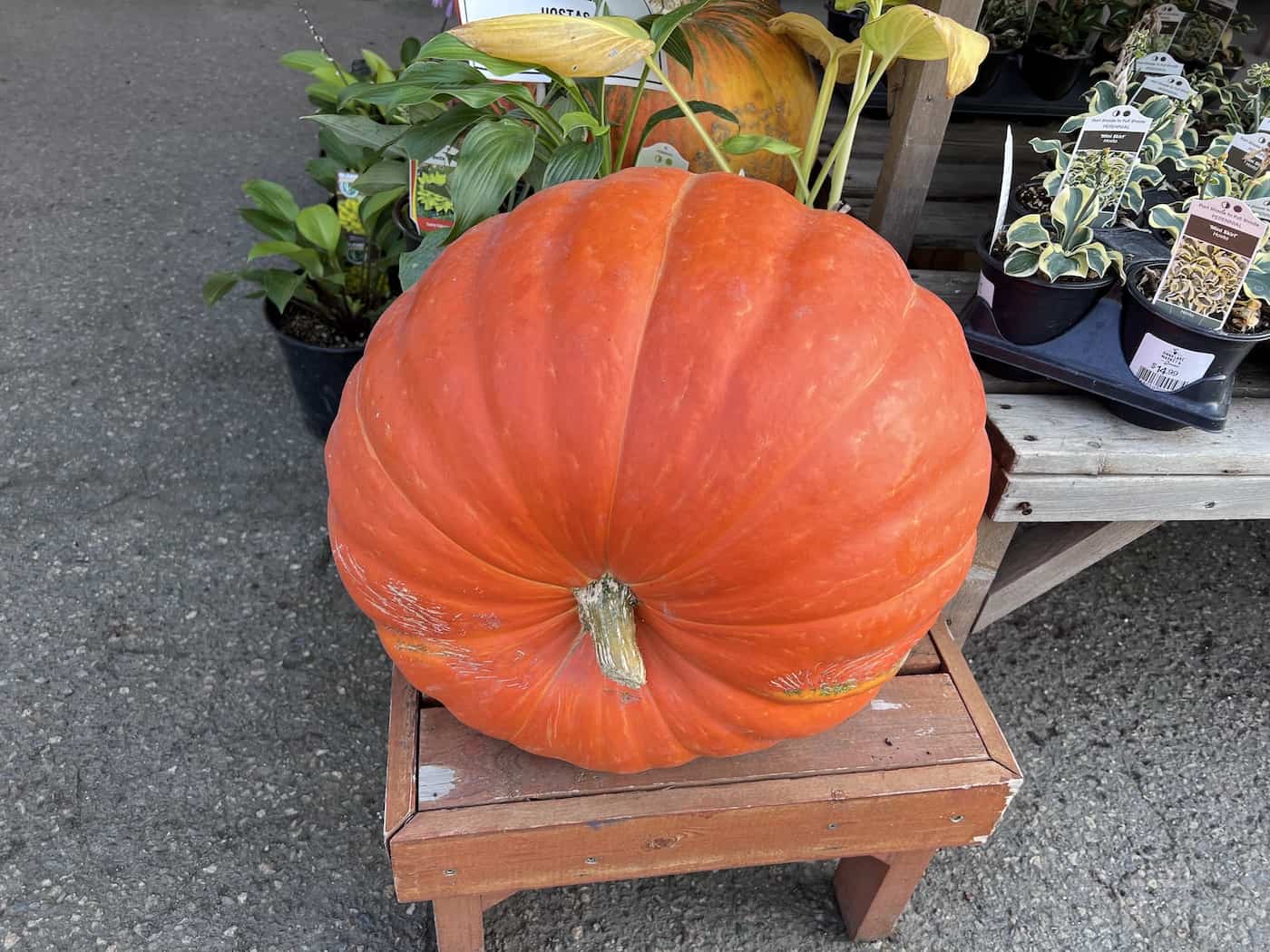The Big Max Pumpkin is a giant pumpkin cultivar with bright orange skin and fine-grained, yellow-orange flesh. They often reach over 100 pounds and have a more rounded shape than some of the blob-like giants. This variety is also easier to grow and more suited to culinary use than many other types of big pumpkins.
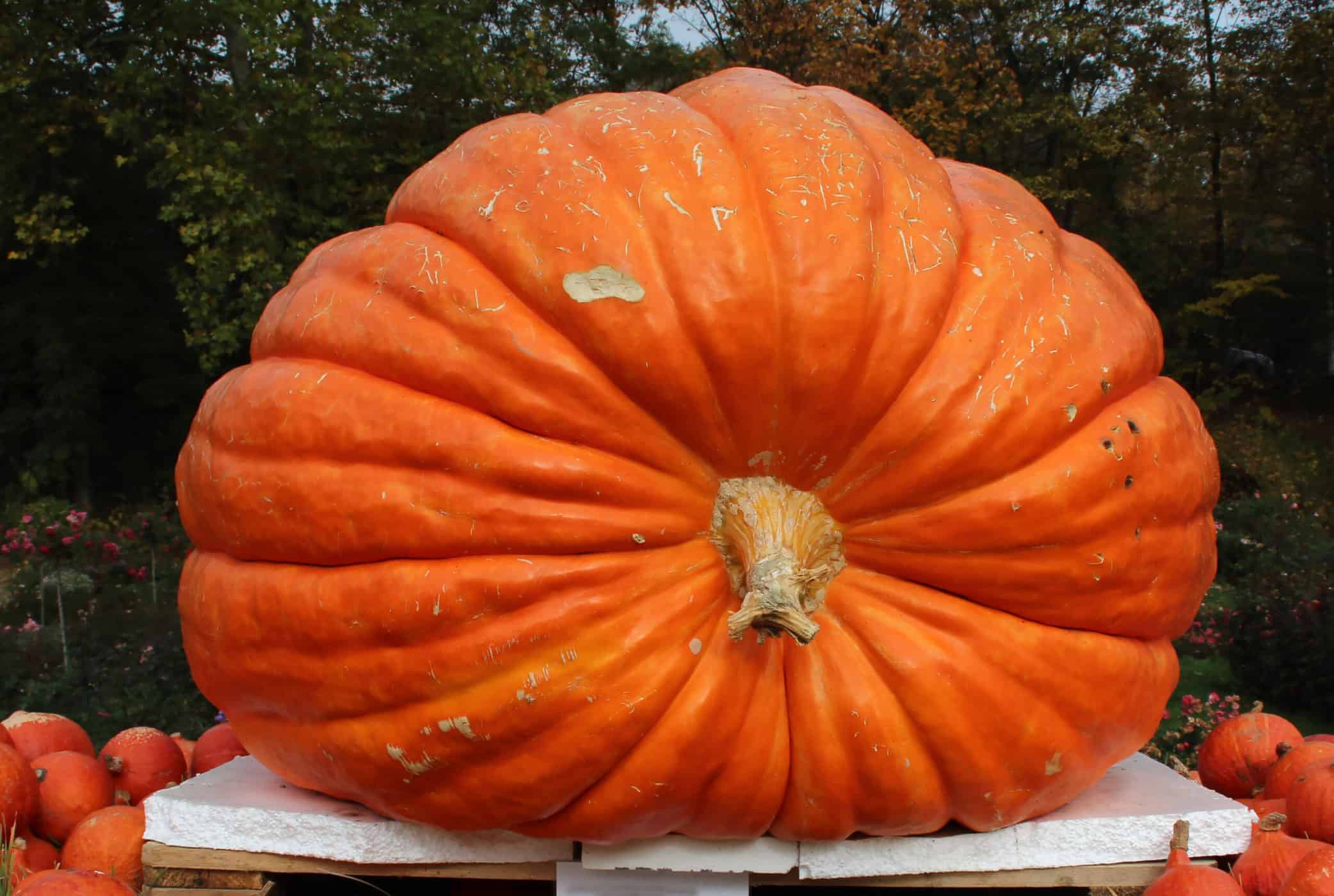
Big Max pumpkin basics
Big Max Pumpkins are extra-large pumpkins that routinely reach 50-100 pounds. It is not uncommon for them to reach 200 pounds, although this is generally their maximum size.
These large pumpkins are most commonly grown for shows, such as a county fair or harvest festival. The big max pumpkin seedlings generally do not grow pumpkins as large as Atlantic Giant pumpkins, but are much more reliable plants and tend to produce more uniform pumpkins. They have a nice shape, as they tend to be less blob-like and have nice bright red-orange skin.
They also make good cooking pumpkins and can be used to make pumpkin puree and pumpkin pies. They can also be excellent for Halloween carving, specifically for making huge jack o lanterns, that can be seen for miles!
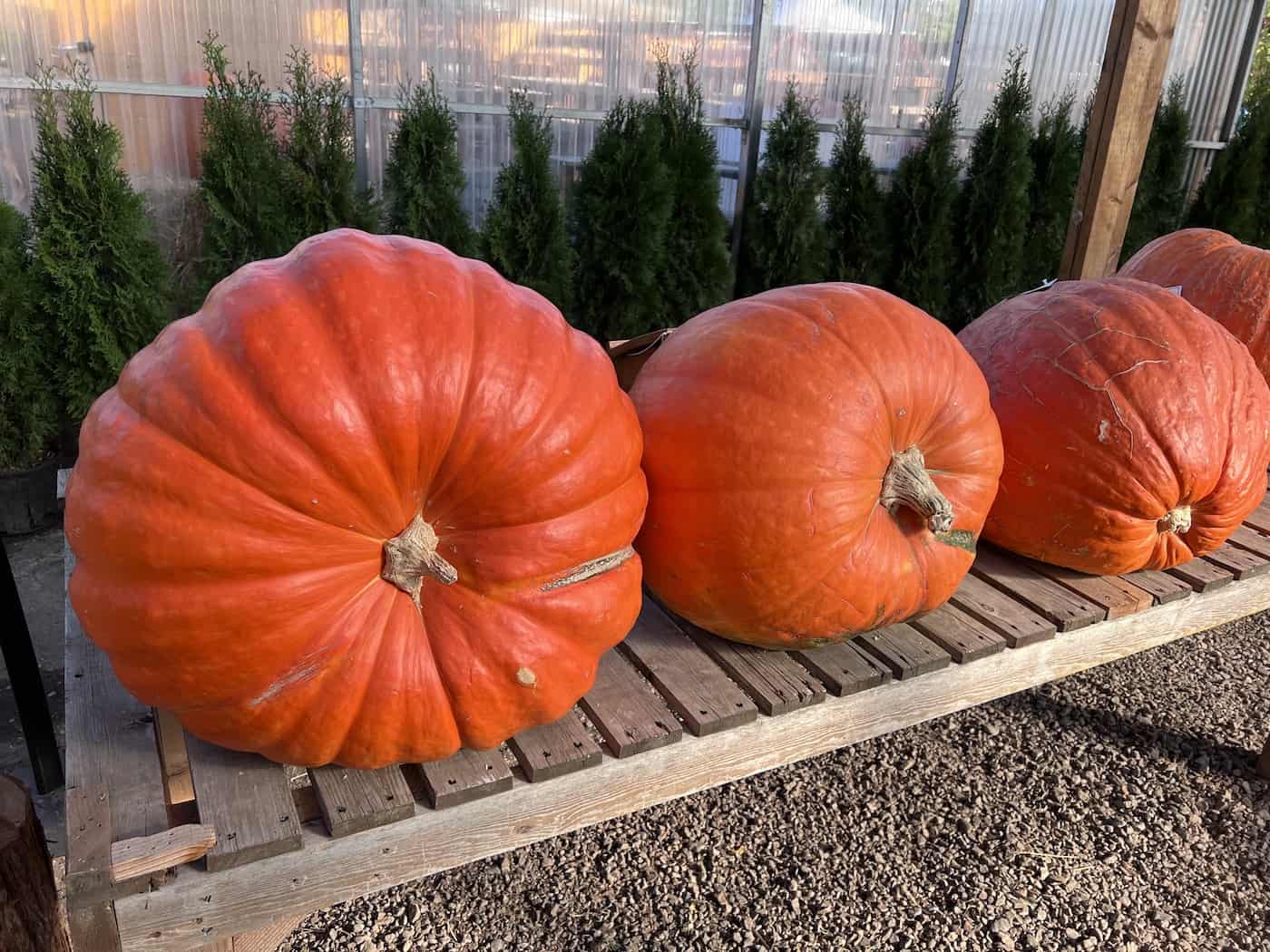
Guide for a great success of growing Big Max pumpkins
Big Max pumpkins are grown from Big Max Pumpkin Seeds. When planting the seeds, they should not be planted over an inch deep into the ground. Aim to plant the seeds 1/2 inch deep so the seedlings don’t have too far to push up through the soil.
While most pumpkins are planted outdoors directly in the dirt, the giant size of Big Max can be increased by starting seeds indoors in cold climates. The seeds should still be placed in a sunny spot that has good air circulation.
The growing season of the pumpkin is generally during the summer months, and the seeds should be moved outdoors during this time. The ideal temperature for them is between 70 and 80 degrees Fahrenheit.
They do not do well under cold conditions and will definitely not reach their full potential if grown in cold temperatures. They do not tolerate frost, so if you are living in an area that has harsh frosts, then you will need to grow them indoors.
It is suggested to wait at least two weeks after your last frost date to plant Big Max pumpkins. They need at least 120 days to maturity, so if there will be a frost date before then, do not grow them outdoors.
During the germination period, you will want to make sure the big max pumpkin seeds are receiving ample nutrition. Germination typically takes one week. However, it can sometimes take up to two weeks. The fertilizer used should be high in phosphorous.
You should also be watering and removing weeds regularly to allow for healthy growth. This should also be done so it can be properly harvested once grown.
Since the big max pumpkin is closely related to the winter squash (they are both parts of the Cucurbita maxima family), some of the same growing tips can be used here. As such, similar to squash, you can tell when pumpkins are mature based on their coloring and crisp stems.
This is when you can begin the harvesting and curing process. Curing can only be done if the weather is dry and must be done after the last frost date or before the rainy season.
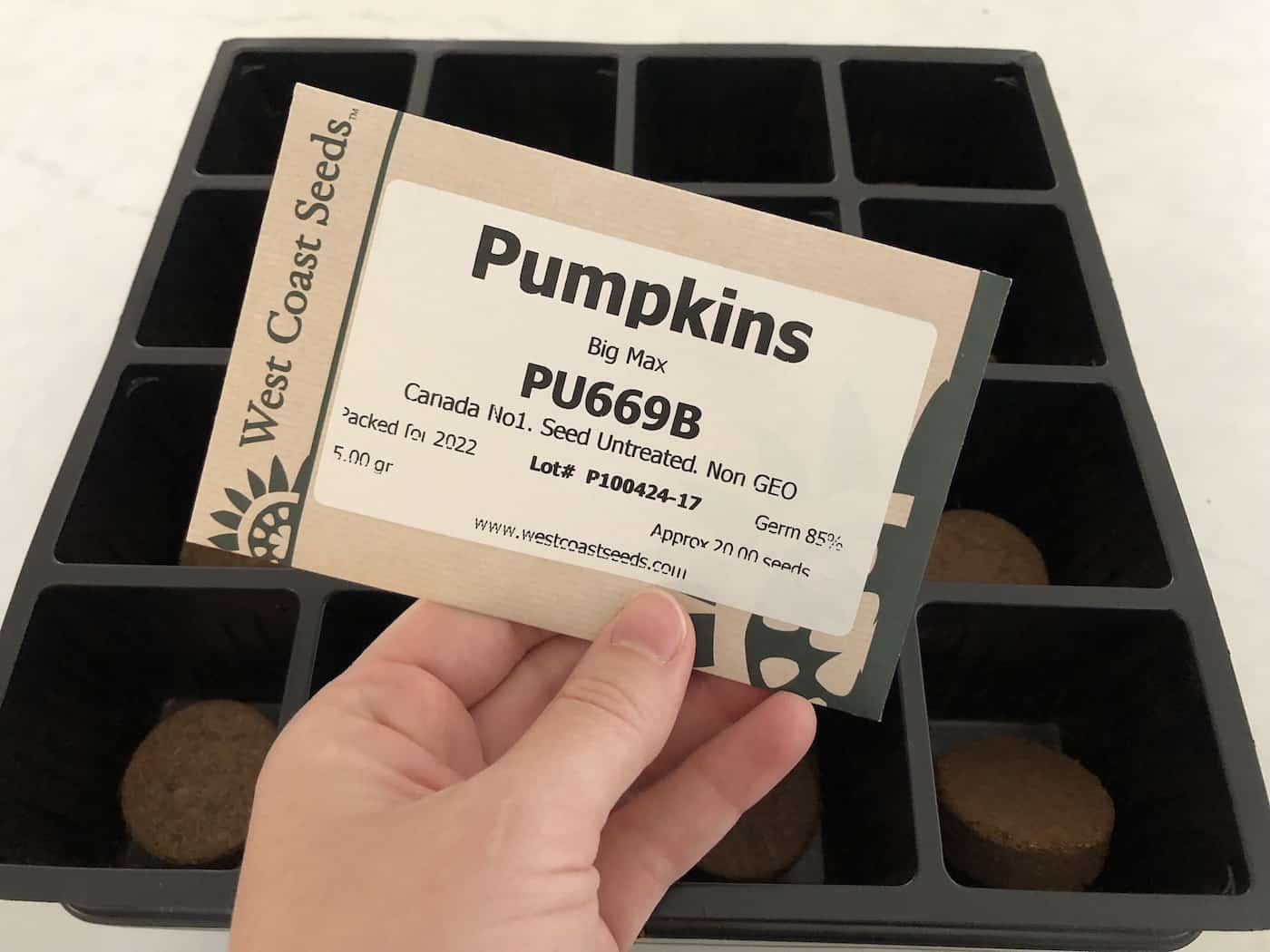
Caring for Big Max pumpkin plants
Big Max pumpkins do well with direct sunlight and warm weather. Full sunlight is ideal and should be provided whenever possible. However, some afternoon shade can be beneficial if the weather is particularly hot.
Big Max pumpkin seeds require full sun and a large amount of water. They need at least one to two inches per week. They need moist soil, so frequent and consistent watering is needed.
Loam soil should be used for Big Max pumpkins as it retains water yet also has good drainage, which makes it ideal for many plants. It is made from clay, sand, and silt and provides great air circulation which is ideal for Big Max pumpkins.
Unless you research the provider you are purchasing from, you cannot know whether or not the soil is actually maximizing the potential of your pumpkin. Because of this, many gardeners decide it is easier to just mix their own dirt. The downside of making your own loam soil is that it is a long process. Although it is fairly simple to do, it takes a long time to perfect.
The process should start during the fall and end in the spring. Because it takes so long to do, it is suggested to make your loam in bulk.
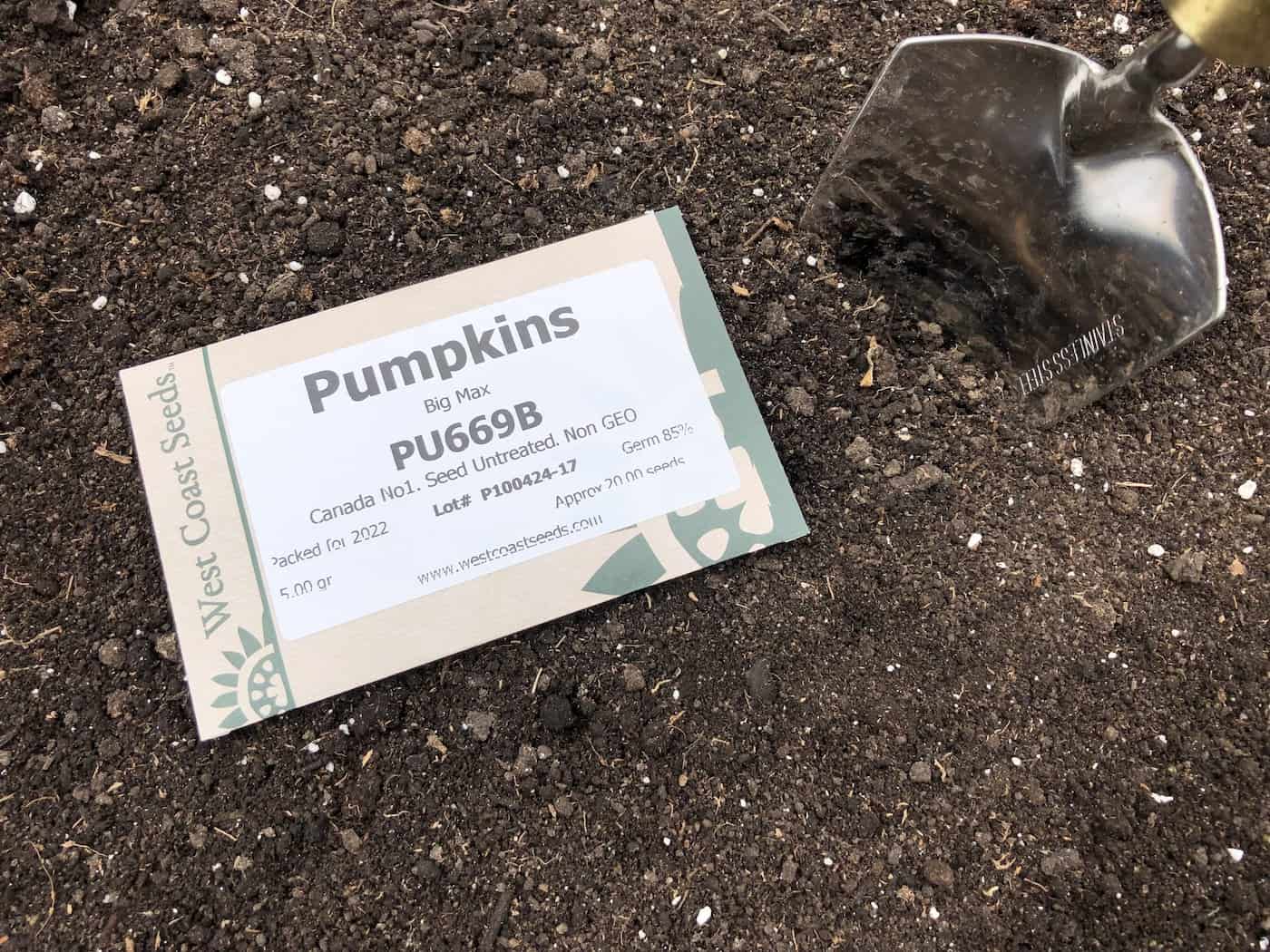
Other types of giant pumpkins
Here are some other pumpkins similar to the Big Max pumpkin:
- Dill’s Atlantic Giant pumpkin
- PrizeWinner Pumpkin
- Mammoth Gold Pumpkin


